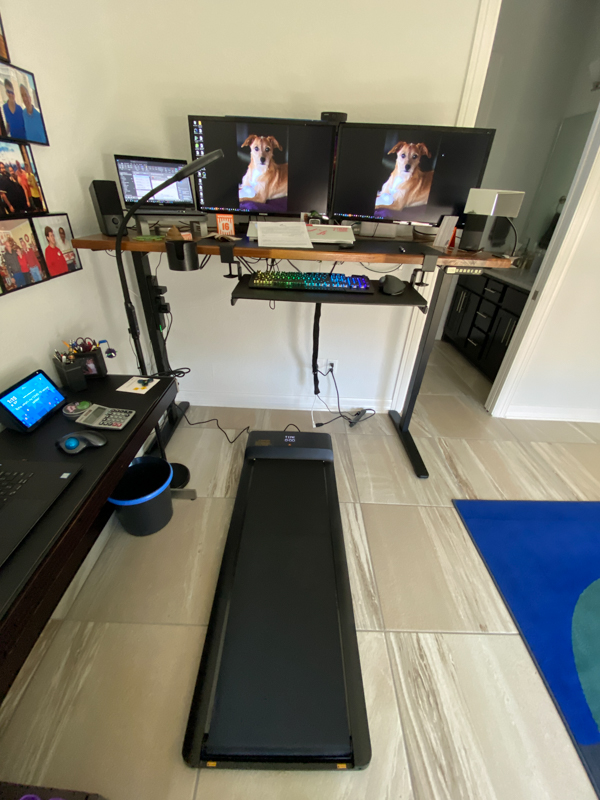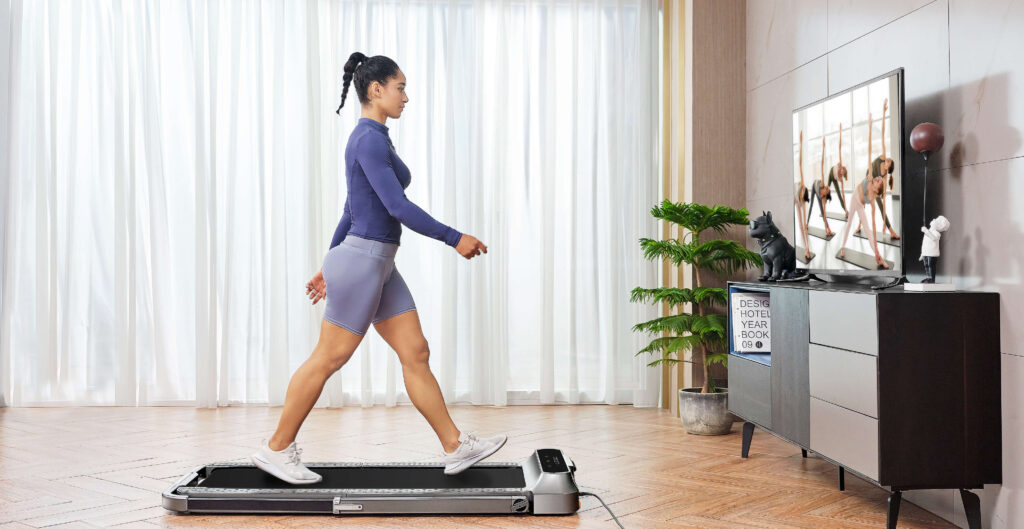Walking pads have gained popularity as a convenient and efficient way to stay active without having to step outside. But how long should you aim to walk on a walking pad? Finding the perfect duration for your workout can be key to achieving your fitness goals while avoiding exhaustion. In this article, we will explore different factors that can influence the recommended time for walking on a walking pad. From considering your fitness level and personal objectives to understanding the importance of gradual progression, we’ll help you determine your ideal walking duration.
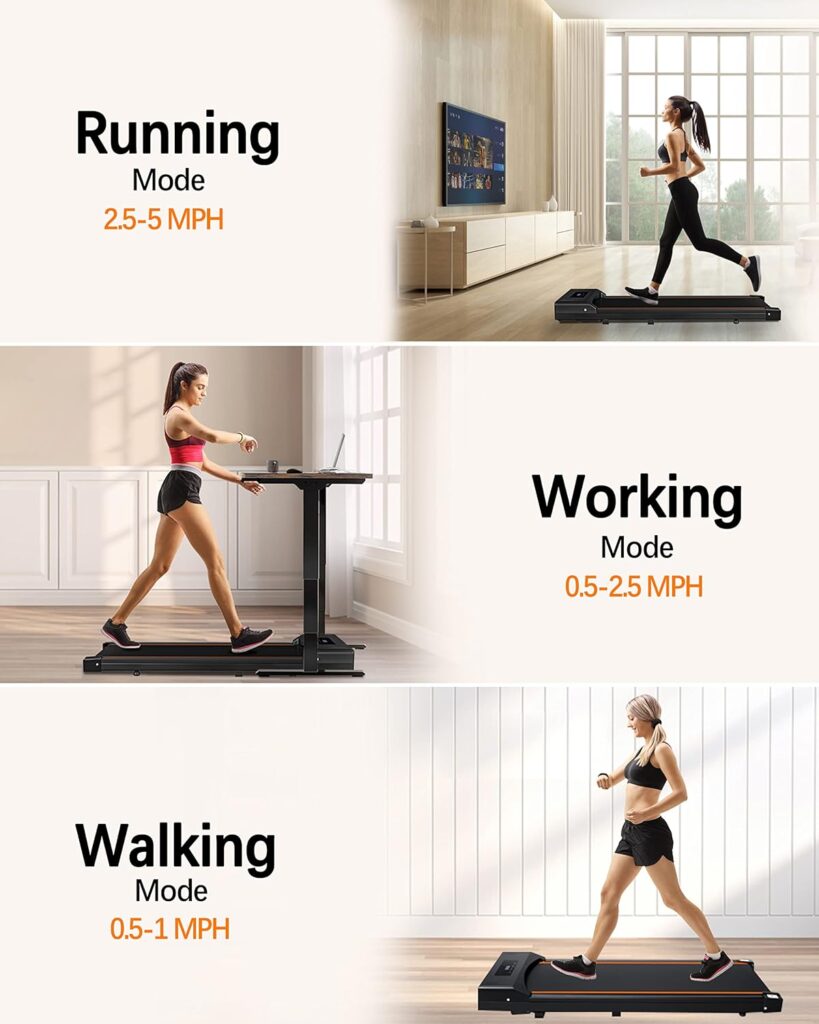
Factors to Consider
Physical Fitness Level
When determining how long you should walk on a walking pad, your current physical fitness level plays a crucial role. If you’re just starting your fitness journey or have a lower fitness level, it’s important to start slowly and gradually increase your duration over time. On the other hand, if you’re already quite fit, you may be able to handle longer walking sessions.
Weight Loss Goals
If weight loss is your primary goal, the duration of your walking sessions on a walking pad becomes significant. For effective weight loss, it’s recommended to engage in at least 150 minutes of moderate-intensity aerobic activity per week. However, the exact duration will depend on factors such as your current weight, metabolism, and overall calorie intake.
Time Availability
Considering your time availability is crucial when determining how long to walk on a walking pad. If you have limited time in your schedule, you may need to divide your walking sessions into shorter bursts throughout the day. Alternatively, if you have more flexibility, you can aim for longer, uninterrupted walks.
Personal Preference
Lastly, your personal preference should also be taken into account. Some individuals may enjoy shorter, more intense workouts, while others might prefer longer, leisurely walks. Finding a duration that aligns with your personal preference will enhance your overall enjoyment and adherence to your walking routine.
Health and Fitness Guidelines
American Heart Association Recommendations
The American Heart Association (AHA) suggests a minimum of 150 minutes of moderate-intensity aerobic activity per week. They also emphasize the importance of spreading these sessions throughout the week to achieve cardiovascular benefits. This recommendation serves as a helpful guideline when determining how long to walk on a walking pad.
World Health Organization Guidelines
The World Health Organization (WHO) advises adults aged 18-64 to engage in at least 150-300 minutes of moderate-intensity aerobic activity per week, or an equivalent combination of vigorous-intensity activity. These guidelines can provide you with a broader range of recommended durations for your walking sessions.
Physical Activity Guidelines for Americans
The Physical Activity Guidelines for Americans recommend that adults engage in at least 150 minutes of moderate-intensity aerobic activity per week. Additionally, they suggest performing muscle-strengthening activities at least two days a week. Incorporating strength training alongside your walking routine can be beneficial for overall health and weight management.
Walking for Weight Loss
Caloric Expenditure
Walking on a walking pad can contribute to weight loss by helping you burn calories. The exact number of calories burned during a walking session depends on various factors such as your body weight, walking speed, and incline. On average, a person weighing around 150 pounds can expect to burn approximately 300-400 calories per hour of brisk walking.
Duration and Intensity
To effectively utilize walking for weight loss, it’s recommended to aim for longer durations of walking at a moderate intensity. Start with shorter sessions, such as 20-30 minutes, and gradually increase the duration as your fitness level improves. Remember to maintain a pace that elevates your heart rate but still allows you to carry on a conversation.
Incorporating Strength Training
While walking primarily targets cardiovascular fitness, incorporating strength training exercises during your walking sessions can further enhance weight loss efforts. You can incorporate bodyweight exercises such as squats, lunges, or push-ups, or utilize resistance bands to add resistance to your movements. Strength training helps build lean muscle, which in turn can boost your metabolism.
Creating a Balanced Routine
To maximize weight loss benefits, it’s important to create a balanced routine that includes a combination of cardiovascular exercise, strength training, and proper nutrition. Walking on a walking pad can serve as the foundation of your routine, providing a low-impact and accessible form of exercise. However, it’s essential to combine it with other activities and a healthy diet for optimal weight loss results.
Beginner’s Guide
Starting with Short Sessions
As a beginner, it’s important to start with shorter walking sessions to allow your body to adapt gradually. Begin with sessions of around 10-15 minutes and focus on maintaining a comfortable yet slightly challenging pace. This will help prevent excessive soreness or fatigue and minimize the risk of injury.
Gradually Increasing Duration
As your body becomes accustomed to walking, gradually increase the duration of your sessions. Aim to add an extra few minutes to each session every week or two. This gradual progression will allow your body to adapt and build endurance over time. Listen to your body, and if you experience any pain or discomfort, take a step back and adjust your progression accordingly.
Monitoring Your Body
Pay attention to how your body feels during and after each walking session. Notice any changes in your breathing, heart rate, or energy levels. Monitoring these factors can give you insights into your progress and help you determine the appropriate duration for your walking sessions.
Listening to Your Body
One of the most important aspects of any exercise routine, including walking on a walking pad, is listening to your body. If you feel excessive fatigue or discomfort during or after a session, it’s a sign that you may need to decrease the duration or intensity. Prioritize rest and recovery to avoid overexertion and prevent injuries.
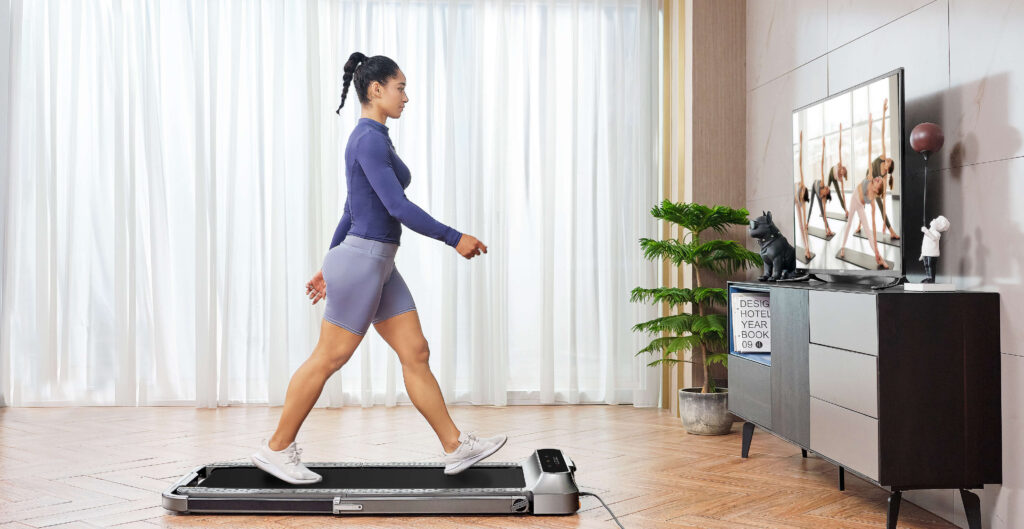
Intermediate/Advanced Guidelines
Incremental Increases in Duration
As you progress from the beginner stage, you can begin incorporating incremental increases in the duration of your walking sessions. Aim to add an extra 5-10 minutes to each session every week or two. This gradual progression helps build stamina and endurance, allowing you to walk for longer periods without excessive fatigue.
Interval Training
To challenge yourself and improve cardiovascular fitness, consider incorporating interval training into your walking routine. Interval training involves alternating between periods of higher intensity, such as brisk walking or jogging, and periods of lower intensity or rest. This method can help increase calorie burn and improve overall fitness.
Adding Inclines or Resistance
To further intensify your walking workouts, consider adding inclines or resistance. Most walking pads offer adjustable incline settings, allowing you to simulate uphill walking. Walking on an incline engages different muscles and increases the intensity of your workout. If your walking pad has resistance bands or attachments, utilize them to add resistance and further enhance your strength and endurance.
Monitoring Intensity Levels
As an intermediate or advanced walker, monitoring your intensity levels is crucial. You should aim for a moderate intensity where you feel challenged but still able to carry on a conversation without excessive breathlessness. You can use heart rate monitors or subjective ratings of perceived exertion (RPE) to gauge your intensity. Adjust the duration of your walking sessions based on how your body responds to maintain an appropriate level of challenge.
Walking vs. Running on a Walking Pad
Different Caloric Expenditure
Walking and running on a walking pad result in different levels of caloric expenditure. Running generally burns more calories per minute than walking due to the increased intensity and higher impact on the body. However, walking can still be an effective form of exercise, especially for those who prefer a lower-impact option. The duration of your walking or running sessions will depend on your caloric goals and personal preferences.
Benefits of Walking
Walking provides numerous benefits beyond weight loss. It is a low-impact exercise that places less stress on the joints compared to running. Walking regularly can improve cardiovascular health, strengthen muscles and bones, boost mood, and reduce the risk of chronic diseases such as heart disease and diabetes. It is a versatile activity that can be incorporated into daily life easily.
Benefits of Running
Running can offer unique benefits for individuals looking to enhance their cardiovascular fitness and challenge themselves physically. It burns more calories per minute, stimulates greater cardiovascular demands, and can help improve speed and endurance. However, running is a higher-impact activity that may not be suitable for everyone, especially those with joint issues or injuries.
Choosing the Right Option
When deciding between walking and running on a walking pad, consider your personal preferences, fitness goals, and any existing health conditions. Both options can be effective forms of exercise, so choose the option that aligns with your preferences and allows you to enjoy and stick to your fitness routine consistently.
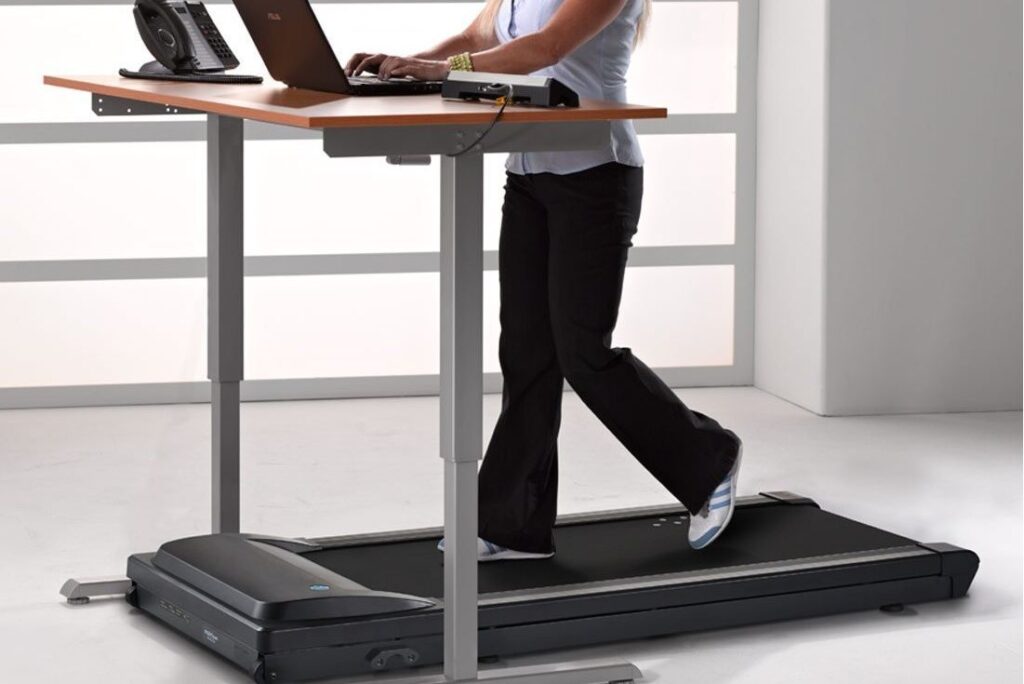
Effects of Walking Pad Speeds
Impact on Caloric Burn
The speed at which you walk on a walking pad can have an impact on the number of calories burned. Walking at a faster pace will generally burn more calories per minute compared to walking at a slower pace. However, a slower pace can still provide health benefits and may be more suitable for individuals with certain health conditions or those who are just starting their fitness journey.
Effects on Muscles and Joints
Walking at different speeds on a walking pad can target different muscles and joints. Walking at a slower pace may primarily engage the calf muscles, while a faster pace may activate the glutes, quadriceps, and hamstrings to a greater extent. However, always prioritize maintaining proper form and avoiding excessive strain on any specific muscle groups or joints.
Speed Options
Most walking pads offer various speed options to accommodate different fitness levels and preferences. It’s important to choose a speed that challenges you without compromising proper form and safety. As a beginner, start with a comfortable speed and gradually increase as you build stamina and confidence.
Safety Considerations
When using a walking pad, it’s crucial to prioritize safety. Be aware of your surroundings, maintain proper balance and posture, and avoid distractions. Familiarize yourself with the emergency stop options on the walking pad to ensure you can quickly halt the machine if needed. Always follow the manufacturer’s safety guidelines to minimize the risk of accidents or injuries.
Utilizing Technology Features
Monitoring Distance and Pace
Most modern walking pads come equipped with technology features that allow you to monitor your distance covered and pace. These features can help track your progress, set goals, and motivate you to challenge yourself. Use the distance and pace monitoring functions to keep yourself accountable and gradually increase your performance.
Tracking Heart Rate
Monitoring your heart rate during walking sessions can provide valuable insights into the intensity of your workout. Many walking pads offer built-in heart rate monitors or are compatible with wearable fitness trackers. By tracking your heart rate, you can ensure you are working within your target heart rate zone for optimal cardiovascular fitness and calorie burn.
Customized Workouts
Some walking pads offer pre-programmed or customizable workout options. These features allow you to vary your walking routine, switch between different intensity levels or inclines, and add variety to your workouts. Customizing your workouts can help prevent boredom and keep you motivated to continue walking regularly.
Interactive Training Programs
For those who enjoy a more structured approach to their workouts, walking pads may offer interactive training programs. These programs often include specific workout plans, varying intensities, and virtual coaching or guidance. Utilizing these interactive training programs can provide guidance and structure to your walking routine, ensuring that you progress effectively and safely.
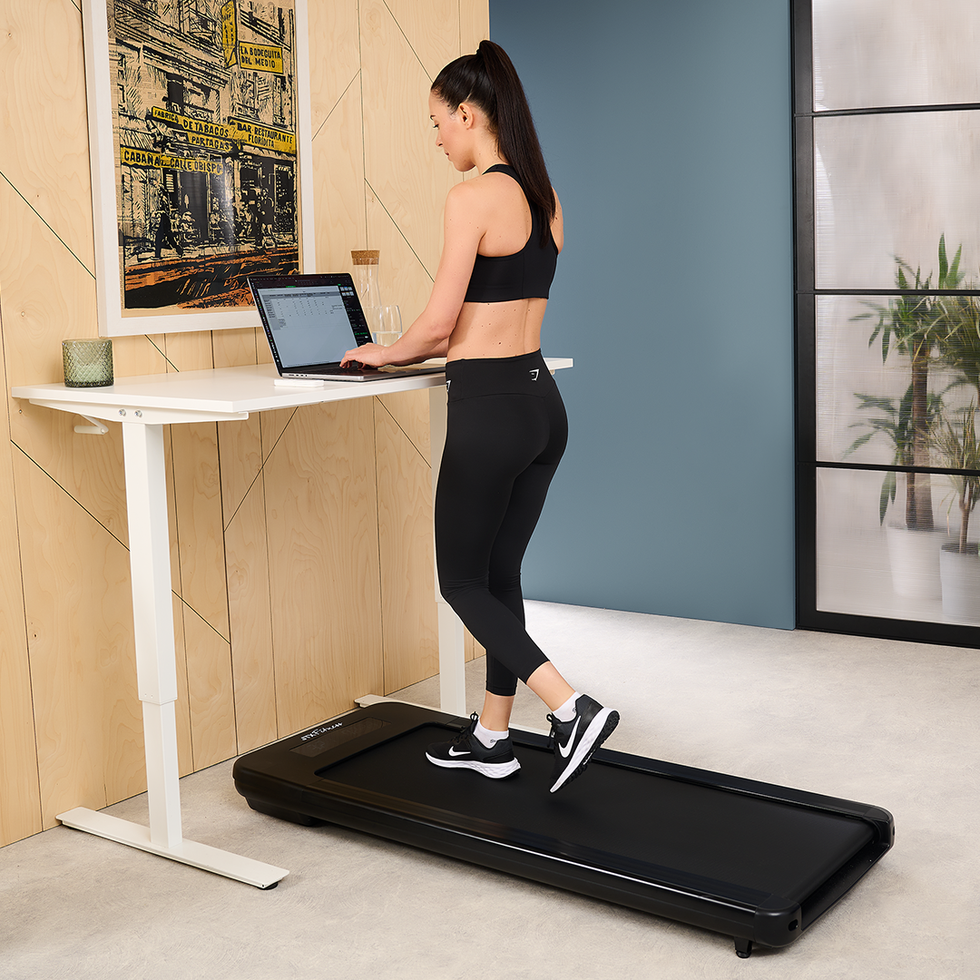
Best Practices and Safety Tips
Warming Up and Cooling Down
Prior to starting your walking session on a walking pad, it’s important to warm up your muscles and prepare your body for exercise. Spend a few minutes engaging in dynamic stretching or light cardio to increase blood flow to your muscles. After your walking session, cool down with static stretches to help prevent muscle soreness and promote flexibility.
Proper Posture and Form
Maintaining proper posture and form while walking on a walking pad is crucial for maximizing effectiveness and preventing injuries. Keep your head aligned with your spine, relax your shoulders, engage your core muscles, and maintain a natural arm swing. Avoid slouching or leaning on the handrails as it can compromise your balance and decrease the intensity of the workout.
Wearing Suitable Footwear
Investing in suitable footwear is essential for a comfortable and safe walking experience on a walking pad. Choose shoes that provide adequate support, cushioning, and stability. Proper footwear can protect your feet, ankles, and knees, and minimize the risk of discomfort or injuries during your walking sessions.
Avoiding Overexertion
While it’s essential to challenge yourself during your walking sessions, it’s equally important to avoid overexertion. Pushing yourself too hard or increasing your duration or intensity too quickly can lead to fatigue, muscle soreness, or even injuries. Listen to your body’s signals and adjust your walking routine accordingly to prevent overexertion and maintain consistency in your workout regimen.
Listening to Your Body
Recognizing Signs of Overexertion
Listening to your body means being aware of the signals it sends and respecting its limits. Signs of overexertion during your walking sessions can include extreme fatigue, dizziness, shortness of breath, or chest pain. If you experience any of these symptoms, it’s crucial to slow down, rest, and seek medical attention if necessary.
Paying Attention to Pain or Discomfort
Pain or discomfort during or after walking on a walking pad should not be ignored. It’s important to differentiate between muscle soreness, which is normal and expected, and sharp or persistent pain, which may indicate an injury or overuse. If you experience abnormal pain or discomfort, consult with a healthcare professional to address any underlying issues and prevent further damage.
Rest and Recovery
Incorporating rest and recovery into your walking routine is essential for allowing your body to repair and strengthen itself. Schedule regular days off from walking to give your muscles, joints, and connective tissues the time they need to recover. Adequate sleep and proper nutrition also play a crucial role in the recovery process.
Consulting with a Healthcare Professional
If you have any existing health conditions or concerns, it’s always a good idea to consult with a healthcare professional before beginning or modifying any exercise routine. They can provide personalized guidance, ensure that walking on a walking pad is suitable for you, and help you determine the appropriate duration and intensity for your individual needs.
In conclusion, the length of time you should walk on a walking pad depends on various factors such as your physical fitness level, weight loss goals, time availability, and personal preference. It’s important to consider health and fitness guidelines from reputable sources, gradually increase duration and intensity, and customize your walking routine based on your goals and abilities. Whether you choose walking or running, monitoring your body, utilizing technology features, and practicing best practices and safety tips are essential for a successful and enjoyable walking experience. Remember to listen to your body, prioritize rest and recovery, and consult with a healthcare professional when needed. Happy walking!
